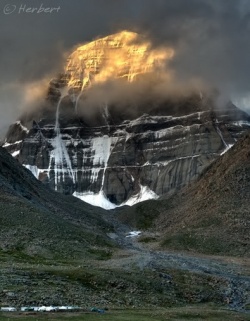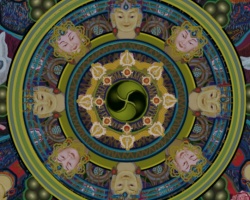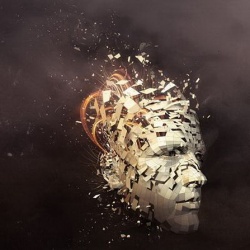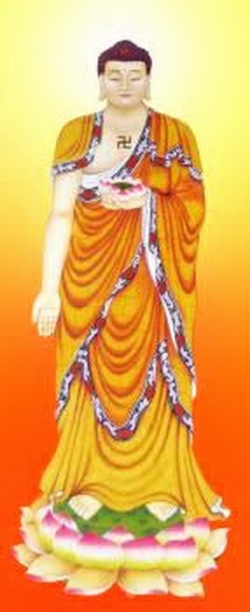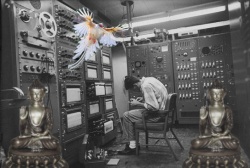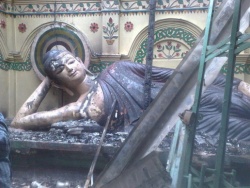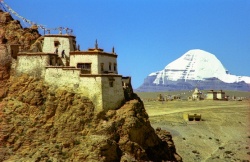Mount Kailash
ka i la sha - Mt. Kailash. See {ri bo gangs can} [RY]
ke la sha - the mount Kailash. Mt. Kailash. See {gangs ti se}. See {ri bo gangs can} [RY]
gangs dkar ti si - Mt. Kailash, Gang Tisey Mountains [RY]
gangs dkar ti se - The White Snow Mountain, Kangkar Tisey, Mt. Kailash (lit. Silver Mountain), is one of the world's great holy mountains, sacred to Hindus and Buddhists alike. It is one of the so-called "Three Holy Places of Tibet," associated with the body, speech, and mind aspects of Chakrasamvara and Vajra Varahi. The other two are Lapchi (la phyi) and Tsari (tsa ri). These three are also listed among the "twenty-four sacred places" (Skt. pitha) of the world, Kailash being identified as Himavat, Labchi as Godavari, and Tsari as both Caritra and Devikota. There are several descriptions of and guides to Mt. Kailash, including one written by Könchok Tendzin Chökyi Lodrö, the sixth Drigung Chungtsang ('bri gung chung tshang dkon mchog bstan 'dzin chos kyi blo gros, 1829-1906), and a recent one composed originally by Chöying Dorje, which came to light in (1990). (MR) (RY)
chu bo bzhi - 1) the Four Great Rivers flowing in the four directions from Mt. Kailash: Brahmaputra, Ganges, Yamuna, Indus. 2) Four Currents or, four pools are: {'dod pa} or, desire. {srid pa} or, existence. {ma rig pa} or, ignorance. {log par lta ba} or, - wrong views. (RY)
ti se' gangs - Mt. Kailash. (RY)
stod gangs ri - Mt. Kailash. (RY)
Discussion
The following is from Matthieu Ricard (MR) in his The Life of Shabkar. The terms you may have been searching for will appear bolded in this wonderfully educational, and highly abbreviated geographic description of how the land of Tibet actually lives through it's cultural habitat, both historically and spiritually:
from chapter 11, pgs. 342-343, note 10:
The White Snow Mountain, Kangkar Tise (gangs dkar ti se), Mt. Kailash (literally 'Silver Mountain'), is one of the world's great holy mountains, sacred to Hindus and Buddhists alike. It is one of the so-called "Three Holy Places of Tibet", associated with the body, speech, and mind aspects of Chakrasamvara and Vajravarahi. The other two are Lapchi (la phyi) and Tsari (tsa ri). These three are also listed among the "Twenty-four Great Sacred Places" (Tib. - gnas chen nyer gzhi), (Skt. - pitha) of the world, Mt. Kailash being identified as Himavat, Lapchi as Godhavari, and Tsari as both Caritra and Devikota. There are several descriptions of and guides to Mt. Kailash, including one written by Konchog Tendzin Chokyi Lodro, the sixth Drigung Chungtsang ('bri gung chung tshang dkon mchog bstan 'dzin chos kyi blo gros, 1829-1906), and a recent one originally composed by Choying Dorje which came to light in (1990), hereafter quoted as MK.
It is recounted in the Chakrasamvara Tantra and it's commentaries (as related in MK) that the world was once ruled by Bhairava, the wrathful form of Mahadeva, who made the land of Magadha the seat of his power. It is said also that four devas and four gandharvas descended from the sky and established their dominion in the eight places known as the Eight Celestial Abodes (mkha' spyod kyi gnas brgyad). Likewise, four yakshas and four rakshasas, already on the earth, made their way to Jambudvipa, where they established themselves in the Eight Earthly Abodes (sa spyod kyi gnas brgyad, while four nagas and four asuras came to Jambudvipa from beneath the earth, to settle themselves in Eight Underground Abodes (sa 'og gi gnas brgyad). They invited Bhairava to visit their dwellings, twenty-four in all, but he, instead of coming personally, manifested in each place as a lingam to which these savage beings would make blood sacrifices.
These demonic forces prevailed from the "golden age" until the beginning of our present "era of strife and conflict." It was then, the tantra recounts, that the Blessed One, Vajradhara, knew that the time had come to subdue these unsuitable beings. Without his mind ever wavering from objectless compassion (dmigs pa med pa'i snying rje), he arose in the formidable wrathful display of a Heruka with four heads and twelve arms. He danced, and through the power of the nondual wisdom of all the Buddhas, trampled down Mahadeva and his consort together with their retinue, liberating their minds into the absolute expanse and establishing them in great bliss.
The Heruka then blessed each of the twenty-four abodes as a palace of Chakrasamvara and each of the twenty-four lingams as a mandala of sixty-two wisdom deities. The sixty-two are Chakrasamvara and his consort, and his retinue: the twenty-four male and twenty-four female Bodhisattvas, and the twelve goddesses.
At the nirmanakaya level, it is said that Mt. Kailash was miraculously blessed by Buddha Shakyamuni and five hundred arhats. Once, Ravana (mgon po beng) and his consort had taken to their palace in Lanka one of the three statues of Buddha Shakyamuni which the Lord himself had blessed. Desiring to place this statue on a worthy support, Ravana had planned to take Mt. Kailash on his back and carry it to Lanka. At the same moment Lord Buddha and five hundred arhats came flying through the sky and alighted to the west of Mt. Kailash, leaving their footprints in the rock. The Buddha stepped on all four sides of the mountain, leaving footprints in the rock which are known as the Four Immutable Nails of Kailash (mi 'gyur ba'i gzer bzhi). Ravana thus was unable to lift the mountain. Then the Buddha sat on a rock in front of the mountain and taught Dharma to the naga king Anavatapta, the lord of the Lake Manasarovar. He then taught the Lankavatara Sutra to Ravana, and blessed him and his consort as the Glorious Wisdom Protector, the Great Being and Consort (dpal ye shes mgon po beng chen lcam dral).
Mt. Kailash was later blessed by Guru Padmasambhava, and became famous after Jetsun Milarepa lived there and held his contest of miracles with Naro Bonchung. (When Jetsun Milarepa and the Bonpo Naro Bonchung held their famous contest of miracles to decide who would retain supremacy over the sacred mountain, they left imprints of their feet in the rocks and many other miraculous signs. See G. C. C. Chang, (1962, vol. 1, pp. 215-224). Later Gyalwa Gotsangpa (rgod tshang pa mgon po rdo rje), Linge Repa (gling rje ras pa) (1128-1188), and many other great meditators lived ascetic lives at the foot of Mt. Kailash.
In particular, holders of the Drigung Kagyu lineage frequented this place in great numbers. Drigung Jigten Gonpo ('bri gung 'jigs rten mgon po 1143-1217) had a dream in which the guardian deities of the Three Sacred Places of Tsari, Lapchi, and Kailash came and prostrated themselves before him, requesting him to go and bless their territories. Jigten Gonpo replied that he would send great meditators instead. Accordingly, he dispatched 80 hermits to each place. Some years later, he reputedly sent 900 hermits and finally 55,525 practitioners to each site (see Huber, 1989). At Kailash these were under the leadership of the great pandita Yakgangpa (pan chen yag sgang pa), who is also called (according to MK, pg. 59), Dorzin Guhya Gangpa (rdor 'dzin gu hya sgang pa); at Lapchi the practitioners were led by Geshe Paldrak (dge bshes dpal grags, 12th-13th century); and at Tsari they were under the guidance of Dorzin Gowoche (rdor 'dzin mgo bo che). In the Three Sacred Places of Tsari, Lapchi, and Kailash, Dorzin (rdor 'dzin = Holder of the Vajra) usually refers to a spiritual master or an administrator sent from Drigung Monastery as representative of the Drigung hierarchs. (see Petech 1978, 317.) (MR-ShabkarNotes).
Source
RangjungYesheWiki:Mount Kailash
Mt. Kailash or Mt. Kailas (Tibetan: Gang Tise or Gang Rinproche; Chinese: Gangdisi Shan) is a striking peak in the Himalayan mountains of western Tibet. The source of some of the longest rivers in Asia, Kailash is a sacred mountain for four faiths: Hindus, Buddhists, Jains and followers of the indigenous Tibetan religion of Bön. Next to the mountain are two sacred lakes, the most important of which is Lake Manasarowar.
What to See
Mount Kailash rises to 22,028 feet (6,714 m) in one of the highest and most rugged parts of the Himalayas. Made of black rock, the symmetrical peak has a distinctive diamond-like shape with four steep facades. The south face has a vertical gash across its horizontal layers, creating the appearance of a swastika - an ancient symbol of good luck in this part of the world. The landscape around the mountain is rugged and dry but crossed by crystalline blue streams and other bodies of water. Near the sacred mountain is the source of the Indus, Sutlej and Bramaputra rivers and on its south side are two freshwater lakes, the easternmost of which is the highly sacred Lake Manasarowar (Mapam). With an altitude of 14,950 feet, Mansarovar is the highest body of fresh water in the world. The other lake, Rakshastal, also has legendary significance.
According to Hindu mythology, Shiva, the god of destruction and regeneration, resides at the summit of a legendary mountain named Kailāśā. Mount Kailāśā is regarded in many sects of Hinduism as Paradise, the ultimate destination of souls and the spiritual center of the world. According to a description in the Puranas, Mount Kailash's four faces are made of crystal, ruby, gold, and lapis lazuli; it is the pillar of the world; rises 84,000 leagues high; is the center of the world mandala; and is located at the heart of six mountain ranges symbolizing a lotus. From it flow four rivers, which stretch to the four quarters of the world and divide the world into four regions. This legendary mountain has long been identified with the striking peak in the Himalayas that now bears its name. Shiva is therefore believed to dwell at its summit. Some traditions say the mountain is Shiva's linga, while Lake Manasarowar is the yoni of his consort. The importance of this holy mountain in Hinduism is reflected, among other places, at the famous Ellora Caves in India, where the largest and most important rock-carved temple is dedicated to Mount Kailash.
Tibetan Buddhists believe that Kailash is the home of the Buddha Demchok (also known as Demchog or Chakrasamvara), who represents supreme bliss. They also say it was on this sacred mountain that Buddhism displaced Bön as the primary religion of Tibet. According to legend, Milarepa, champion of Tantric Buddhism, arrived in Tibet to challenge Naro-Bonchung, representative of Bön. The two magicians engaged in a great sorcerous battle, but neither was able to gain a decisive advantage.
Finally, it was agreed that whoever could reach the summit of Kailash first would be the victor. While Naro-Bonchung soared up the slope on a magic drum, Milarepa's followers were dumbfounded to see him sitting still and meditating. Yet when Naro-Bonchung was nearly at the top, Milarepa suddenly moved into action and overtook him by riding on the rays of the sun, thus winning the contest and bringing Buddhism to Tibet. In Jainism, Kailash is known as Mount Ashtapada and is the site where the founder of their faith, Rishabhadeva, attained liberation from rebirth. In Bön, the religion which predates Buddhism in Tibet, the mountain is believed to be the abode of the sky goddess Sipaimen.Pilgrimage Every year, thousands make a pilgrimage to Kailash, following a tradition going back thousands of years. Pilgrims of several religions believe that circumambulating (walking around) Mount Kailash will remove sins and bring good fortune. The pilgrimage around the sacred mountain is called the Kailash Kora.
It is said that one trip around the sacred mountain will wipe away all the sins (bad karma) of one's current lifetime; 108 revolutions will remove the sins of all one's lifetimes and bring salvation from reincarnation (moksa). Alternatively, pilgrims who complete one circumbulation of Kailash and bathe in the frigid waters of Lake Mansarovar will also bring salvation.
No pilgrims climb Mt. Kailash; all four religions believe it would be a serious act of sacrilege to set foot on its slopes. Legend has it that the only person to have reached the summit is the Buddhist champion Milarepa (who flew to the top in the 12th century) and that all others who have ventured to defy the taboo have died in the process.
The rugged path around Mount Kailash is 32 miles (52 km) long, following a blue mountain stream much of the way. Altitudes range from 15,000 feet at the start to 19,000 feet at the Dolma Pass. The circumambulation is made in a clockwise direction by Hindus and Buddhists but counterclockwise by followers of the Jain and Bön religions. A typical journey lasts about three days, but some try to earn extra merit by completing the entire walk in a single day. Braving the uneven terrain, high altitudes and variable weather, these hardy souls can complete the trek in about 15 hours.
Other pilgrims seek special merit by taking much longer to circle the holy mountain: instead of walking, they perform body-length prostrations for the entire 32 miles. The pilgrim bends down, kneels, prostrates full-length, makes a mark with his fingers, rises to his knees, prays, and then crawls forward on hands and knees to the mark made by his/her fingers before repeating the process. It requires at least four days of physical endurance to perform the circumambulation this way. The mountain is located in a particularly remote and inhospitable area of the Tibetan Himalayas. Only those in the best health are able to undertake the journey even to the starting point of the circumambulation, let alone walk 52 km in a single day. A few modern amenities, such as benches, resting places and refreshment kiosks, exist to aid the pilgrims in their devotions.
Most pilgrims and trekkers take three days to complete the journey around Mount Kailash from the city of Darchen, aiming for Drirapuk Monastery on the first night, crossing Dolma La Pass and arriving at Zutrulpuk Monastery the second night, and finally returning to Darchen on the third day. Monastery accommodation is not always available, so travelers must carry tents and food. To help with the burden, yaks and porters can be hired in Darchen for about ¥100 per day. The path frequently crosses mountain streams, so waterproof boots or an extra pair of shoes is essential.
Getting There
Most pilgrims begin their journey overland from Kathmandu or Lhasa. From there, they travel over the Tibetan plateau (ranging 10,000-16,000 feet in elevation) in a rented Jeep. It is a long journey with four night stops in camps, finally arriving at Darchen (elevation: 4600 m). Western visitors usually need a guide, vehicle, driver, and a military permit to visit Kailash, all of which are arranged on tours from Kathmandu or Lhasa. The short version of the tour takes 14 days and cost around ¥15,000 ($1,950), which can be split among four travelers. The longer 21-day tours run about ¥17,000 ($2,210).
The circuit around Mount Kailash typically begins and ends in Darchen, where foreigners must register and pay an admission fee to the Kailash area (currently ¥100). Popular hostels in Darchen include the Yak Hotel and the Darchen Guesthouse, where dorm beds are available for under 10
